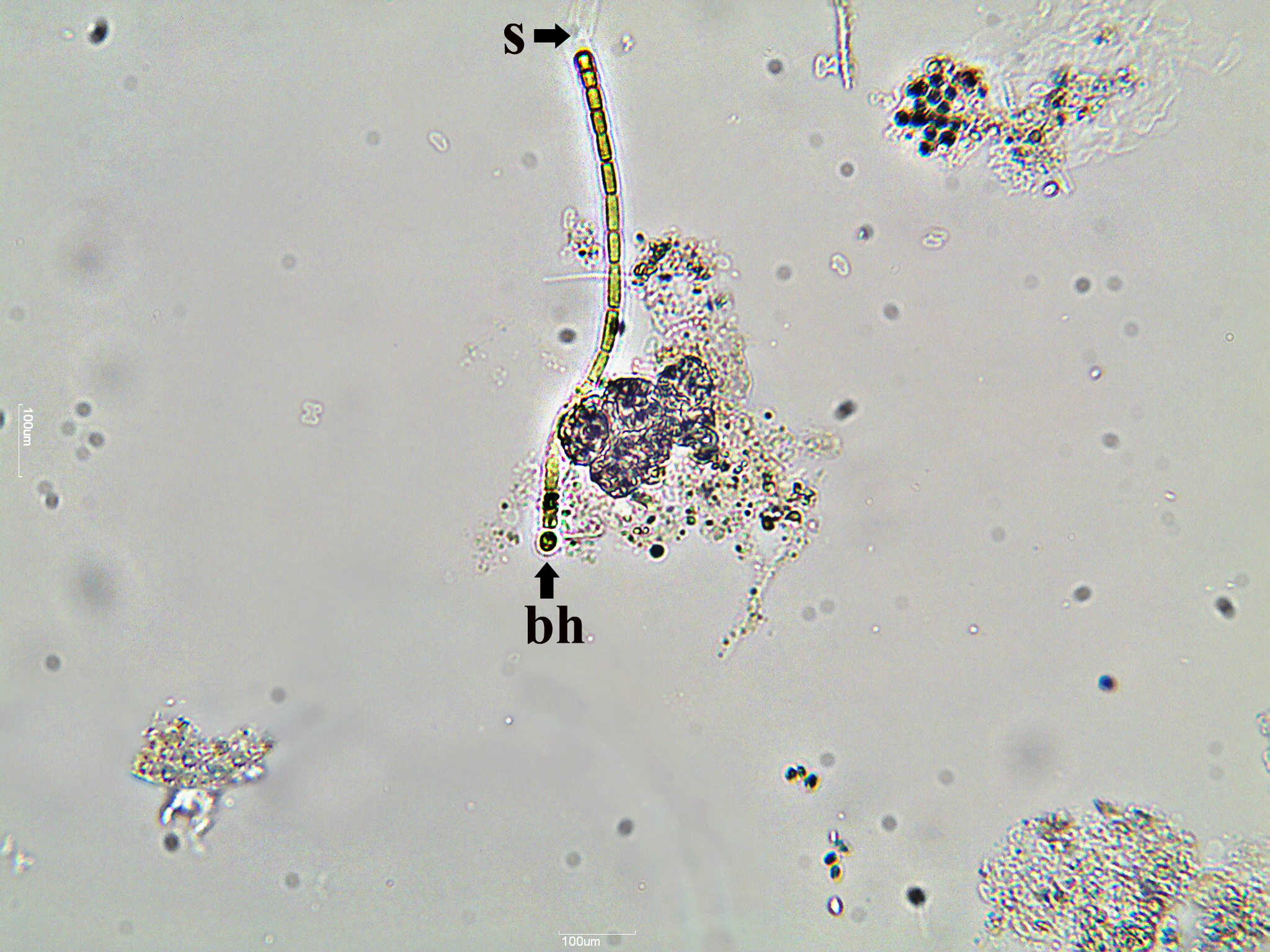Calothrix Agardh ex Bornet et Flahault, 1886
Key # 16
1.) Classification: Order Nostocales, Family Rivulariaceae. There are approximately 60
described species. The Rivulariaceae, which includes the genera Calothrix, Gloeotrichia,
and Rivularia, is one of the more structurally complex families among the cyanobacteria.
Furthermore, there is a great deal of heterogeneity within the genus Calothrix.
Examples of this include the presence or absence of terminal hairs and akinetes, and the
the analysis of its genetic material. For this, published studies suggest revision
of some members of this genus into a novel genus (Berrendero et. al. 2008, 2011).
2.) Form: Filamentous.
3.) Groups: Either solitary filaments or small, bristle-like clusters/thin mats that creep
along the substrate. They do not occur in a common colonial mucilage. They are
oriented toward the origin of growth.
4.) Sheath: Individual, firm, yellow brownish, and, at times, lamellated (structures composed
of thin, homogeneous layers) and/or widened at the end into funnel-shaped collars.
5.) Filaments: Heteropolar. Basal pole is wider, and attached with spherical to hemispherical
heterocysts. Apical pole usually tapers to elongate, hairlike, hyaline end cells. Hair
formation depends on phosphorus metabolism. False branches are rare.
Crosswall constriction is variable.
6.) Cells: Cylindrical to barrel shaped, with no aerotopes in vegetative cells.
Heterocysts: Basal end, ellipsoidal to spherical, seldom intercalary.
Akinetes: Rare, ellipsoidal. When they occur, they occur above the basal heterocyst.
Aerotopes: Absent in vegetative cells, but present in hormogonia.
7.) Color: Ranges from green to black.
8.) Replication: Filament disintegration at heterocysts (maturing into new filaments) or
by motile hormogonia (separating from filament at necridic cell and released from the
sheath after loss of terminal hair). Aerotopes form only in hormogonia. Cell division
is perpendicular to long filament axis. Some have meristematic zones.
9.) Habitat: Strictly periphytic; growing on macrophytes, other algae, or substrates in
nonpolluted aquatic habitats. Several are from marine littoral or supralittoral zones.
10.) Similar genera: Rivularia and Gloeotrichia. All 3 have terminal, basal heterocysts,
tapering filaments and obvious sheaths.
Gloeotrichia colonies have a characteristically conspicuous radial arrangement.
Calothrix filaments tend to be solitary or in small clusters; they are not radially arranged.
Gloeotrichia is planktonic; Calothrix and Rivularia are generally not planktonic.
11.) Toxins: None are reported.
12.) Distinguishing features: Calothrix filaments have a round, basal heterocyst, and the
apical end tapers down to a hairlike structure. They are solitary or in small groups
attached to a substrate. They are not planktonic. MAN

Calothrix_01
Calothrix filaments have a round, basal heterocyst (bh) and the apical end tapers
into smaller cells. The trichome is covered with a sheath (s) that broadens out
at the apical end. They are solitary or in small groups attached to a substrate
(seen in this image). This sample is from shallow water in El Junco, Ecuador
taken in 2014. 400X magnification.